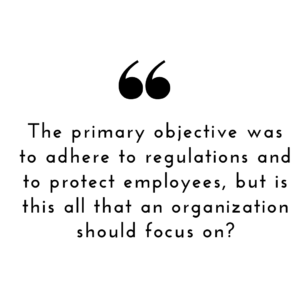

As the world continues to fight the devastating global pandemic, organizations in Africa are realizing the need to increase remote working in order to remain productive as they adhere to regulations and protect their employees.
From our conversations with some of our clients in Southern Africa, workplaces seem to have adopted what experts have predicted to be the future of the workplace, and that is a hybrid workplace. The hybrid workplace is one that has some of its staff working from a remote location and some working on site.
 In 2020, the assumption that the lockdowns were temporary made organizations quickly pivot to Working From Home (WFH), without affording their employees the necessary capabilities and tools, that would make them effective as they worked from home.
In 2020, the assumption that the lockdowns were temporary made organizations quickly pivot to Working From Home (WFH), without affording their employees the necessary capabilities and tools, that would make them effective as they worked from home.
The primary objective was to adhere to regulations and to protect employees, but is this all that an organization should focus on?
Fast forward to 2021, this WFH solution is no longer a temporary measure but a practice that is here to stay. In this season, organization should now focus not only on adhering to regulations but also on ensuring productivity. It is worth noting that during the Pre-Covid era, WFH was never about adhering to regulations, or protecting employees but it was all about improving employee productivity, with an emphasis on flexibility and wellbeing.
In 2021 and beyond, permanent WFH and hybrid work places are proving to be crucial. However, adopting that model permanently is not as easy as it sounds. Most organizations managed to survive 2020 but very few were thriving. In order to thrive, organizations should understand the strengths of WFH and hybrid workplaces, but more importantly their downsides.
Knowing the downsides of these models will help you identify capability gaps in your workforce and systems, therefore positioning you to improve those areas and effectively benefit from WFH.
The WFH model has presented downsides such as failure of teams to deliver expected results, blurry boundary between work and home, employees feeling exhausted, lonely and stressed and the weakening of team cohesion. All these downsides stem from the organization’s failure to appreciate that WFH and or Remote Work practices are a means of ensuring productivity (through flexibility) in as much as the models will assist them with adhering to safety regulations and the protection of employees. Hence the question of whether WFH and or Remote work practices are sustainable or not is answered by the level of the possibility of continuous productivity or the lack of it.
When it comes to the sustainability of working from home, it is the responsibility of both the manager and employee. Managers need to play the connector role by figuring out who needs to connect on what projects and also going an extra mile in diffusing any emotional strains. The manager also needs to run intentional check-ins and provide feedback & support along the way. Employees also have a role to play, to be organized, to schedule their day and be more present as they collaborate with others.
Remember the question to whether WFH and Remote working models are sustainable or not will be answered by how productive your workforce is, of which both the manager and employee are responsible for it.



















